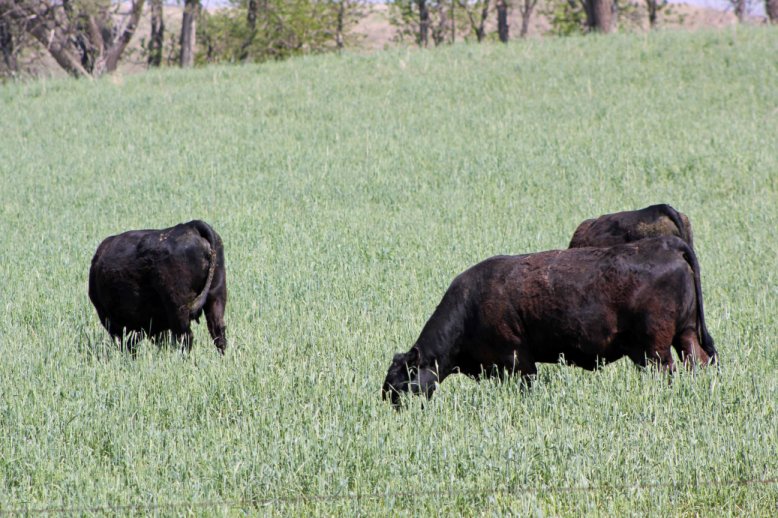
By Bruce Anderson, UNL Forage Specialist
RYE, TRITICALE, OR WHEAT – WHICH IS BEST?
Are you planting or at least thinking about planting wheat, rye, or triticale for early spring forage? Which one will you choose?
Which small grain – wheat, rye, or triticale – should you plant for spring forage? Let’s look at some of their characteristics to help you select.
Let’s start with cereal rye. Rye is your best choice for the earliest pasture possible. Because it’s early, it also may be the best match for double cropping. Some varieties provide quite a bit of fall growth, too, if planted early. Rye also may be the most reliable when planted under stressful conditions. But it has some drawbacks. It turns stemmy and matures much earlier than wheat or triticale, losing feed value and palatability earlier in the spring. Plus, wheat grain producers don’t want it contaminating fields next year.
Triticale holds on to its feed value best into late spring. This makes it well suited for hay and silage, or for stretching grazing well into June if you don’t mind starting two or three weeks later. But it tends to be a bit more susceptible to winter injury.
Winter wheat has been the small grain of choice for winter and spring grazing in the southern plains where higher winter temperatures allow growth to continue, although slowly. Up here where wheat goes dormant, though, its carrying capacity is not as high as triticale or rye. But it is top quality before stems develop. And it’s the clear choice if you want the double use as early pasture and for grain.
There it is. Rye for early pasture, triticale for hay, silage, and later grazing, and wheat for grazing plus grain. You may have other factors affecting your choice, but in general, these guidelines work well.
BE WARY OF NITRATES
Will you be feeding cane, millet, or oat hay, or maybe corn stalk bales, to your cows this year? If so, don’t let high nitrate levels kill your cows or cause abortions.
Nitrates occur naturally in all forages. At low levels, nitrates either are converted into microbial protein by bacteria in the rumen or they are excreted. But when nitrate concentrations get too high, they can kill cows and maybe abort calves.
Some plants are much more likely to be high in nitrates than others. Annual grasses like cane, millet, oats, and even corn often have elevated nitrate levels. Weeds like pigweed, lambsquarter, and kochia are especially troublesome this year. If your hay has lots of these weeds or is an annual grass, be alert to the potential for high nitrates.
That doesn’t mean these feeds always are toxic, nor does it mean that high-nitrate hay can’t be fed safely. But always test these feeds for nitrates in a lab to determine how to feed them safely.
Remember, there are many ways to feed high nitrate hay safely. Diluting with grain or low nitrate forages is most common. Frequent, small meals that slowly increase the amount of nitrate fed helps cattle adapt to high nitrate hay. And make sure cattle have plenty of clean, low nitrate water at all times.
Nitrates cause deaths most often after animals have been prevented from eating naturally for a day or more. Avoid feeding high or even marginally high nitrate hay at this time because cattle will eat an extra large meal when very hungry. This could create an overload of nitrates to their system, leading to death.
More details about nitrates in forages are available in a NebGuide at your local extension office or online to help you feed safely: http://www.ianrpubs.unl.edu/pages/publicationD.jsp?publicationId=884